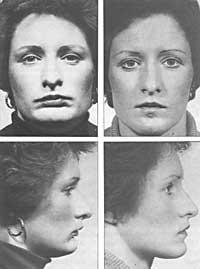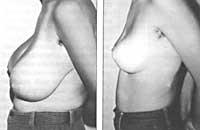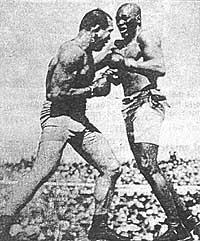Surgery of beauty
1990/04/01 Agirre, Jabier - Medikua eta OEEko kidea Iturria: Elhuyar aldizkaria
Currently, two concepts must be differentiated:
- From plastic surgery that fixes large damage (this is why it is called REPAIRER)
- Plastic or aesthetic surgery.
The first is used in specific cases, e.b. As oncological surgery in the head and neck cancers, or within Orthognathic, for the remediation of craniofacial malformations (whether they are hard or soft tissues, a very adequate quality of life is achieved for the patient). The second tries to solve physical problems or defects without any pathological significance, since the patient wants to “eliminate them”.

And we will realize that both types of surgery carry out very different relationships between the doctor/patient. In a case of cancer, the priority, of course, is to save the life of the patient. Within the other, however, it is important to have very clear the objective conditions and circumstances that surgery will offer to the patient.
Within the aesthetics, today the rejuvenation of the face occupies the most important place, if we look at the number of operations. And there is no specific age for this surgery. For a few years, people who come to these specialists “asking for beauty” have been getting younger.
* Eyelids
Eyelid surgery is known as BLEPHAROPLASTY, an operation that consists of removing excess cumulative skin around the eyes and fat sachets. In some cases, along with this, a second operation (removal of the ROOSTER LEGS) is performed to correct the very fallen eyebrows or remove the wrinkles that have occurred around the eyes.
The intervention is done first in the upper eyelid and then in the lower eyelid, dissimulating the wedges in the natural edge of the eyelid, with the shade provided by the eyelashes. These spots tend to disappear after a few months. Due to the level currently achieved by the technique, the results of the operation are about to be maintained throughout life and a second operation is not normally necessary.
* Nose * Nose
It is common for the patient to come to the doctor with a specific idea and that this idea or intention does not fit the aesthetics and with the suggestions that the doctor can make, many people approach the consultation requesting a “lifting” (stretching of the skin of the face), but after analyzing his problem, the surgeon can decide that this case will be solved with rhinoplasty.
RHINOPLASTY (or nasal plastic surgery) is usually used to improve the aesthetic aspect of the nose, to remedy the tip, if the angle between the nose and the upper lip is slightly blinded, to slightly improve or reduce the size. After surgery, there may be some small discomfort (inflammation in the eye contours and misconceptions, for example) that in a few days will disappear. It is not advisable to perform sudden or sudden movements, but if not, the patient will resume his normal life in a short time.
* Face * Face
Facelift is the most suitable surgery to solve the feeling of heat or sagging of the face and neck. Bone structure, skin texture and the patient's own inheritance have a lot to do when deciding how long the results will last.
* Breasts

It is a special section for women. Due to the special psychological incidence of surgical intervention in this surgery, regardless of the type of surgery (increase, decrease and/or breast collection operations).
The extended operation is what is done to increase the gland in people with small breasts. And what are those who come to this situation? Women who have had breast atrophy after pregnancy or who have had a mastectomy (or breast removal) due to breast cancer.
The intervention consists of placing silicone prostheses under the mammary gland or under the chest muscles (this last technique is preferred by specialists). The incision, which is made for the implantation of prosthesis, is usually made around the areola, so the scars are almost imperceptible and, in any case, will disappear in the first months.
Due to the advances made in the materials used in recent years, it is practically impossible for the inner gelatinous silicone of the prostheses to leave outward. Today's prosthesis has silicone placed in different sheets, which prevents accidents in the daily life of the patient.
LIPOSUCTION When about seven or eight years ago the French surgeon Illouz began to experience the technique called liposuction, with the repair or irritation of his companions, few thought that this technique had the success that it has achieved today, much less. However, liposuction has been evolving and modernizing throughout these years to become the most demanded operation by patients with weight problems. The operation is simple, efficient and simple. By means of a high-pressure vacuum cleaner and through a small incision (through an incision that barely leaves a trace) it is possible to extract litres and/or two litres of fat from stacked body parts (especially hip, buttock, thigh, knee and abdomen). It must be said that this operation only removes fat. Therefore, the depressions or holes that some people have on the skin do not disappear (ORANGE SKIN). The most suitable people for this type of intervention are those of young skin, of great elasticity, since once cooked or sucked the fat, the skin will adapt better to the new situation. On the contrary, if the skin has lost elasticity (and this is normal in older people) it seems more advisable to do lipectomy, that is, to extract along with the fat the excess skin. However, this type of intervention has a disadvantage, leaving afterwards scars or scars. The risks of liposuction are minimal: the second and third day can lead a normal life, although the first week after the operation will have to wear a special belt so that the skin adapts better to its new environment. |

Gai honi buruzko eduki gehiago
Elhuyarrek garatutako teknologia





